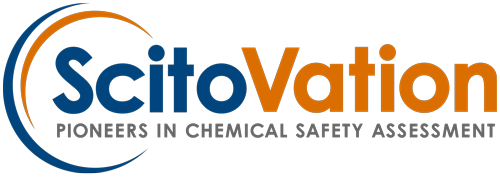Doug Wolf, DVM, PhD, discusses the creation and use of the Souce-to-Outcome framework, a new NAM incorporating a novel mathematical procedure developed to estimate the human equivalent concentration (HEC) for inhalation risk assessment based upon the relevant aerosol characterization, respiratory dosimetry modeling, and endpoints derived from an in vitro assay using human respiratory epithelial tissue.
What you’ll learn:
- Introduction to and uses of the Source-to-Outcome framework NAM.
- The value of combining human in silico and human in vitro methods, eliminating the typical uncertainties associated with extrapolation from rodent studies.
- The successful development and application of a NAM for human safety and risk assessment and the importance of regular collaborative communication with all stakeholders.
What you’ll learn:
- How to integrate exposure and toxicity data in a quantitative approach while providing a standardized reporting template.
- Understand computational approaches that follow community best practices and are uniformly applied to data.
- Key concepts on automation, method standardization, and model acceptance will be discussed through our computing products.
Dr. Doug Wolf:
Dr. Wolf graduated in 1981 from the University of Missouri with a Doctor of Veterinary Medicine degree (D.V.M.) and, after 6 years in clinical veterinary practice, attended Purdue University where, in 1991, he completed a residency in pathology and Ph.D. in Veterinary Pathology. Doug was a staff scientist for 6 years at the Chemical Industry Institute of Toxicology (CIIT) where he studied chemical carcinogenesis. From 1997 until 2013 Doug held various research and leadership positions with the U.S. Environmental Protection Agency, where he continued research in chemical carcinogenesis and molecular pathology. In 2013 he joined Syngenta Crop Protection and is currently a Senior Syngenta Fellow where he leads international efforts to advance the science of risk assessment focusing on crop protection chemicals. Dr. Wolf has authored or coauthored over 160 journal articles, book chapters, and technical reports and is a Fellow of the International Academy of Toxicologic Pathologists and the Academy of Toxicological Sciences.
Abstract:
Crop protection products require assessment by regulatory authorities for inhalation toxicity based on pattern of use. Determining inhalation hazard and risk has traditionally been based on the use of an in vivo study. Using the Source-to-Outcome framework a New Approach Method (NAM) incorporating a novel mathematical procedure was developed to estimate the human equivalent concentration (HEC) for inhalation risk assessment based upon the relevant aerosol characterization, respiratory dosimetry modelling, and endpoints derived from an in vitro assay using human respiratory epithelial tissue. The Source-to-Outcome approach incorporates external and internal exposure metrics along with the toxicity adverse outcome pathway. The information was then integrated to conduct a risk assessment for agricultural operators exposed to products containing chlorothalonil (CTN), a broad-spectrum fungicide. Chlorothalonil is a respiratory irritant and respiratory epithelium toxicant and was assessed for respiratory toxicity in a human MucilAir™, in vitro 3D model for respiratory airways. This NAM combined human in silico and human in vitro methods eliminating the typical uncertainties associated with extrapolation from rodent studies. The NAM is not chemical-specific and may be applied to conduct an inhalation risk assessment to aerosol droplets of any cytotoxic respiratory irritant and was published as an OECD IATA case #367. This example illustrates the successful development and application of a NAM for human safety and risk assessment and the importance of regular collaborative communication with all stakeholders.
About ScitoVation:
ScitoVation helps clients assess chemical compound safety using innovative science, next-generation technology, and professional expertise. ScitoVation is known for partnership, flexibility, and proven success in its work to develop safer and more effective pharmaceuticals, food ingredients, agricultural chemicals, commodity chemicals and consumer products. A spin-off of the former The CIIT and The Hammer Institutes for Chemical & Drug Safety Sciences, ScitoVation is an industry leader of New Approach Methods (NAMS) for chemical/drug discovery & development in the rapidly evolving global regulatory landscape.
